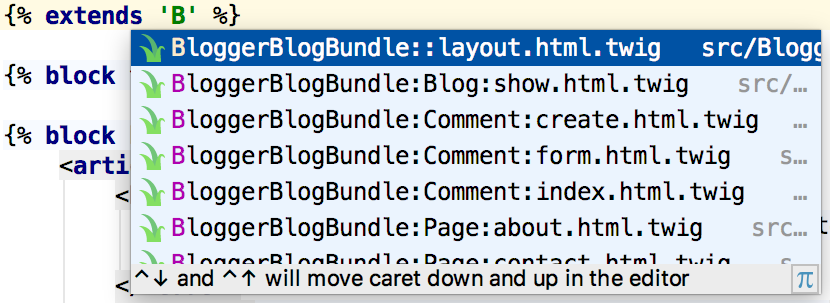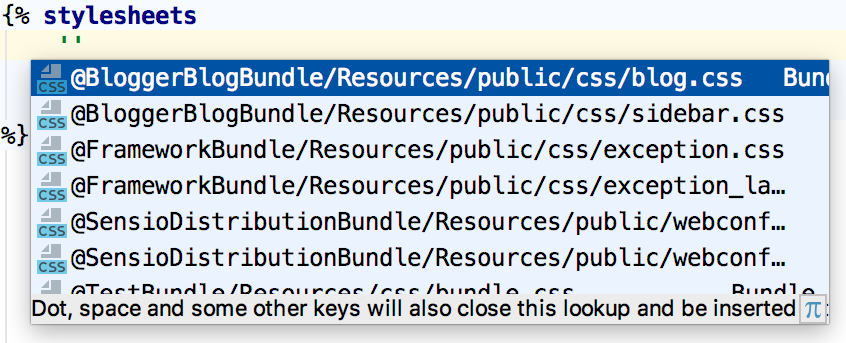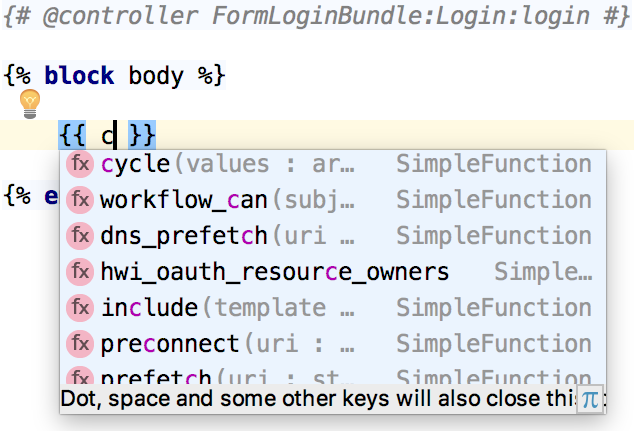Working with Twig Templates
Besides the common templates support, the Symfony Plugin provides completion, navigation and code inspection specific to the Twig templating language.
Code completion for Twig templates
In the editor, press Ctrl+Space to invoke code completion and do any of the following:
-
Provide Templates and Blocks for appropriate functions in any twig file.

-
Provide Extensions, Filters and Macros, both self-defined or installed from a third party.

-
Provide individual assets and full bundles.

Code navigation for Twig templates
To navigate to the declaration of a template, block, extension, filter, macro, or asset, position the caret at its usage and press Ctrl+B. Alternatively, Ctrl+Click (for Windows and Linux) or ⌘+Click (for macOS) the usage.

Code inspection for Twig templates
If we refer an asset that is not known to the application (for example, if the asset does not exist yet), PhpStorm displays the corresponding warning from the Missing Asset inspection..

Working with Twig variables
In a Twig template, you can define variables using the {# variable_name variable_value #} syntax, for example:
{# name John #}As soon as a variable is defined, code completion (Ctrl+Space ) and navigating to declaration (Ctrl+B) for it become available.
In a similar manner, you can define a controller that uses the template by adding a controller annotation, for example:
{# @controller BloggerBlogBundle:Home:index #}Once we do this, PhpStorm will provide code completion and navigation for all variables passed into the template.
